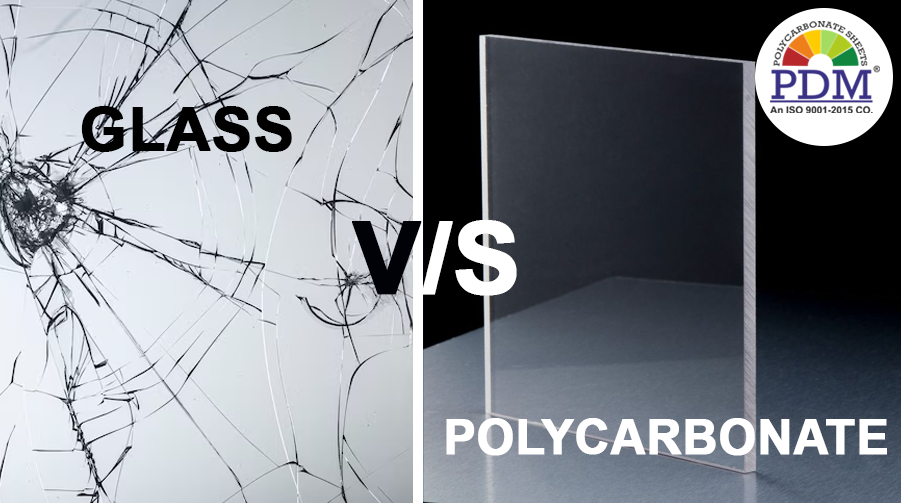Introduction:
In the world of architecture, interior design, and manufacturing, the choice between Polycarbonate Vs Glass has long been a subject of debate. However, in recent years, we’ve witnessed a notable shift towards the use of plastics in various applications traditionally dominated by glass. From windows and skylights to packaging and signage, plastics are steadily gaining ground. But what’s driving this trend? In this blog, we’ll explore the compelling reasons why plastics are increasingly replacing glass in today’s design landscape.
Durability and Impact Resistance:
One of the primary advantages of plastics over glass is their superior durability and impact resistance. Materials like polycarbonate and acrylic are significantly stronger than glass, making them less prone to breakage and shattering. This durability is particularly valuable in high-traffic areas, outdoor installations, and environments where safety is paramount.
Lightweight Construction:
Plastics are inherently lighter than glass, making them easier and more cost-effective to transport, handle, and install. This lightweight construction not only reduces the risk of accidents during transportation and installation but also offers design flexibility, allowing for larger and more intricate installations without the need for heavy support structures.
Design Versatility:
Unlike glass, which is limited in terms of shape, thickness, and colour, plastics offer unparalleled design versatility. They can be molded, shaped, and coloured to meet virtually any design specification, opening up a world of creative possibilities for architects, designers, and manufacturers. Whether it’s curved skylights, custom signage, or translucent partitions, plastics provide endless options for innovative design solutions.
Energy Efficiency:
Plastics have excellent thermal insulation properties, helping to improve energy efficiency in buildings and reduce heating and cooling costs. Compared to glass, which can conduct heat and cold more readily, plastics provide better insulation, helping to maintain comfortable indoor temperatures year-round. This energy-saving benefit is increasingly important in the face of climate change and rising energy costs.
Cost-Effectiveness:
From a cost perspective, plastics often offer significant savings compared to glass. Not only are the materials themselves more affordable, but their lightweight nature also translates to lower transportation and installation costs. Additionally, plastics require less maintenance and are less prone to damage, further reducing long-term expenses for building owners and homeowners.
UV Resistance:
Plastics such as polycarbonate and acrylic are naturally resistant to UV radiation, making them ideal for outdoor applications where prolonged exposure to sunlight is a concern. Unlike glass, which may degrade or discolour over time when exposed to UV rays, plastics maintain their clarity and structural integrity, ensuring long-lasting performance in even the harshest environments.
Sound Insulation:
Plastics offer excellent sound insulation properties, helping to reduce noise transmission and improve acoustics in interior spaces. This is particularly beneficial in commercial buildings, offices, and residential settings where noise control is essential for occupant comfort and productivity.
Conclusion:
Polycarbonate Vs Glass : As the demand for sustainable, cost-effective, and versatile building materials continues to grow, plastics are emerging as a clear frontrunner in the competition with glass. With their superior durability, lightweight construction, design versatility, energy efficiency, UV resistance, sound insulation, and cost-effectiveness, plastics are revolutionizing the way we approach architecture, design, and manufacturing. Whether it’s enhancing safety, promoting creativity, improving sustainability, or enhancing comfort, plastics are reshaping the future of modern design.



